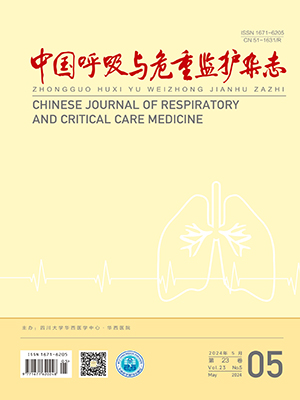| 1. |
Brock A, Krause S, Ingber DE. Control of cancer formation by intrinsic genetic noise and microenvironmental cues. Nat Rev Cancer, 2015, 15:499-509.
|
| 2. |
Nieto MA. The ins and outs of the epithelial to mesenchymal transition in health and disease. Annu Rev Cell Dev Biol, 2011, 27:347-376.
|
| 3. |
Kise K, Kinugasa-Katayama Y, Takakura N. Tumor microenvironment for cancer stem cells. Adv Drug Deliv Rev, 2016, 99:197-205.
|
| 4. |
Bedogni B, Welford SM, Cassarino DS, et al. The hypoxic microenvironment of the skin contributes to Akt-mediated melanocyte transformation. Cancer Cell, 2005, 8:443-454.
|
| 5. |
Ballas LK, Hu BR, Quinn DI. Chromoplexy and hypoxic microenvironment drives prostate cancer. Lancet Oncol, 2014, 15:1419-1421.
|
| 6. |
Higgins DF, Kimura K, Bernhardt WM, et al. Hypoxia promotes fibrogenesis in vivo via HIF-1 stimulation of epithelial-to-mesenchymal transition. J Clin Invest, 2007, 117:3810-3820.
|
| 7. |
Bartis D, Mise N, Mahida RY, et al. Epithelial-mesenchymal transition in lung development and disease:does it exist and is it important? Thorax, 2014, 69:760-765.
|
| 8. |
Rho JK, Choi YJ, Lee JK, et al. Epithelial to mesenchymal transition derived from repeated exposure to gefitinib determines the sensitivity to EGFR inhibitors in A549, a non-small cell lung cancer cell line. Lung Cancer, 2009, 63:219-226.
|
| 9. |
Shintani Y, Okimura A, Sato K, et al. Epithelial to mesenchymal transition is a determinant of sensitivity to chemoradiotherapy in non-small cell lung cancer. Ann Thorac Surg, 2011, 92:1794-1804.
|
| 10. |
Nicolini A, Ferrari P, Fini M, et al. Chemoresistance to paclitaxel induces epithelial mesenchymal transition and enhances metastatic potential for epithelial ovarian carcinoma cells. Int J Oncol, 2007, 31:277-283.
|
| 11. |
Sulzer MA, Leers MP, van Noord JA, et al. Reduced E-cadherin expression is associated with increased lymph node metastasis and unfavorable prognosis in non-small cell lung cancer. Am J Respir Crit Care Med, 1998, 157:1319-1323.
|
| 12. |
Dauphin M, Barbe C, Lemaire S, et al. Vimentin expression predictsthe occurrence of metastases in non-small cell lung carcinomas. Lung Cancer, 2013, 81:117-122.
|
| 13. |
方美玉.进展期非小细胞肺癌药物治疗进展.中国呼吸与危重监护杂志, 2008, 7:481-484.
|
| 14. |
Rho JK, Choi YJ, Lee JK, et al. Epithelial to mesenchymal transition derived from repeated exposure to gefitinib determines the sensitivity to EGFR inhibitors in A549, a non-small cell lung cancer cell line. Lung Cancer, 2009, 63:219-226.
|
| 15. |
Shintani Y, Okimura A, Sato K, et al. Epithelial to mesenchymal transition is a determinant of sensitivity to chemoradiotherapy in non-small cell. Ann Thorac Surg, 2011, 92:1794.
|




